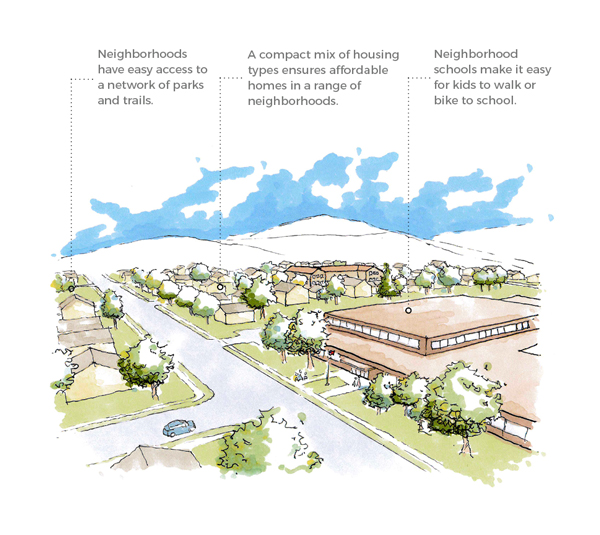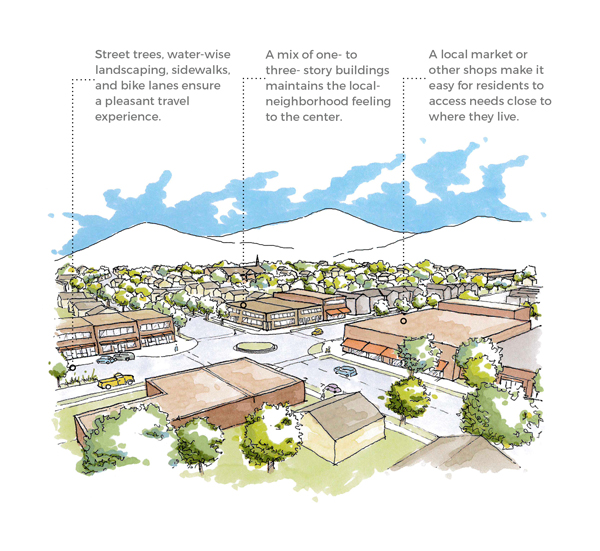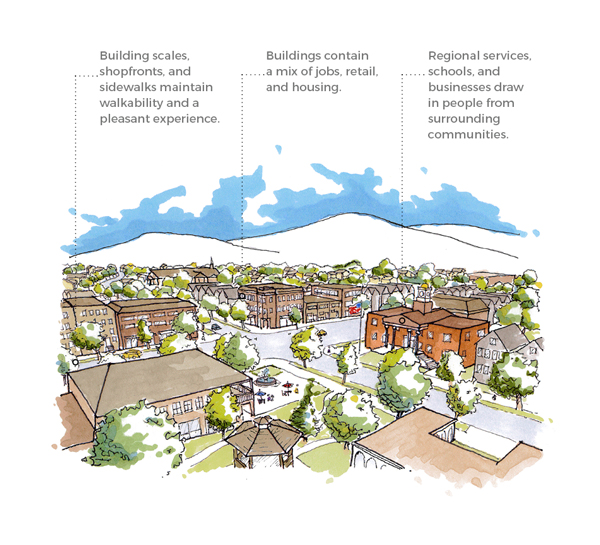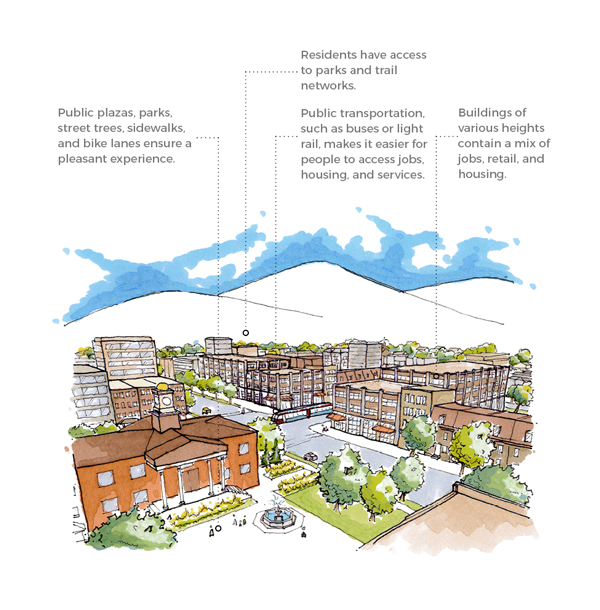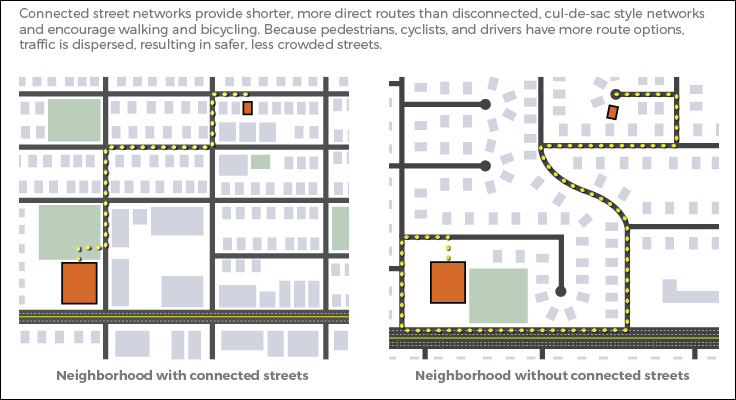Implementation Cornerstone 1:
A Network of Quality Communities
Our communities, cities, and towns are made up of places to live, places to shop, places to learn, places to play, places to work, and ways to travel between them all. Utah was settled with many small villages and towns widely scattered throughout Utah’s valleys. Each town was centered around a main street or town center. Over time, as Utah has grown, many of those cities and towns have grown together, and their main streets and town centers have struggled to survive.
Restoring that fabric of neighborhood, village, town, and urban centers—and building a pattern of new centers as growth expands outward—will significantly improve the convenience of living in Utah as our population nearly doubles by 2050. Centers bring destinations closer to people, making it convenient to drive short distances, take public transportation, walk, or bike. This in turn improves air quality.
Utah is midstream in two market changes that offer tremendous opportunities to establish a strong
pattern of centers:
- Residential development is becoming more compact. Particularly along the Wasatch Front, lot sizes have been shrinking for decades. Most Utahns still desire to live in single-family homes, but many consumers are choosing to live in homes with smaller yards or even townhomes. This trend, which is driven by rising costs, as well as changing preferences, provides the opportunity to develop compact residential housing in and around new or restored centers. Providing such housing means more residents can live close to jobs, shopping, and other destinations. Such housing development will also use less water for lawns and less land per home, preserving more farmland and open space.
- Because of online shopping, the amount of retail-store space per person is declining and will continue to dramatically decrease. Many buildings in today’s shopping centers will become available for other uses or will be replaced by different types of buildings. These retail areas can be converted into mixed-use centers that contain compact housing, restaurants, and other local services. We can take advantage of this market trend to reestablish and strengthen the historic pattern of centers in our existing communities.
An effective pattern of centers will have the following characteristics, many of which can occur even in a small rural town:
BENEFITS
Building a network of quality communities that have these attributes is a robust strategy with significant benefits for almost every topic Utahns ranked as being important to our future: air quality, water, transportation, housing, cost of living, recreation, education, agriculture, health, disaster resilience, and jobs and economy. Specifically, benefits include the following:
- Better air quality, as people drive less
- Greater convenience of walking, biking, or taking public transportation
- Improved physical and mental health, as people are more active
- Reduced demand for water, as yards become smaller
- More agricultural land and water, as well as open space, as urban development becomes more compact
- More affordable housing in desirable neighborhoods for people of different incomes, abilities, and stages of life
- Decreased cost of living through less-expensive transportation options and the reduced need to own a car
- Better access for all Utahns to good schools, healthcare, recreation, healthy food, shopping, jobs, etc.
- Reduced concentrations of poverty, as Utah communities provide a range of housing choices
- Increased resilience to disaster, as development avoids hazardous areas
- Better recreational spaces close to where people live
- Healthier ecosystems and better stormwater management
- ...And many more!

